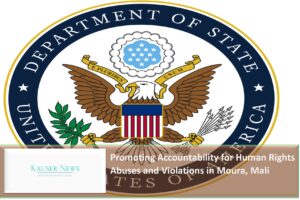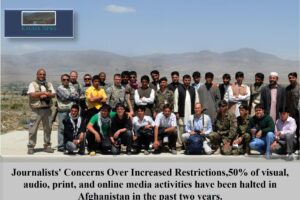Amidst the ever-evolving dynamics of global politics, the United States finds itself at a crucial juncture in its involvement in Afghanistan. Over the past two decades, the nation has invested significant resources, both human and financial, in efforts to stabilize the war-torn country and combat extremist groups like the Taliban. However, recent developments suggest a paradigm shift in America’s approach, indicating a bold strategy aimed at reforming the Taliban and fostering the creation of a new government in Afghanistan by 2025.
The movement gaining momentum in both the USA and the Middle East underscores this transformative agenda. It signifies a departure from traditional confrontational tactics towards a more nuanced and strategic engagement with the Taliban, recognizing the group’s influence and its potential role in shaping Afghanistan’s future.
The rationale behind this shift stems from a multifaceted analysis of the Afghan conflict and its underlying complexities. Despite years of military intervention and nation-building efforts, the Taliban continues to wield significant power and influence across large swathes of Afghanistan. Its resilient insurgency has thwarted attempts at establishing lasting stability, while the Afghan government’s legitimacy and efficacy remain in question.
Recognizing the futility of perpetual conflict, the United States has embarked on a pragmatic path towards reconciliation and reconstruction. Central to this strategy is the recognition of the Taliban as a legitimate stakeholder in Afghanistan’s political landscape. By engaging the group in dialogue and negotiations, the aim is to address their grievances, integrate them into the political process, and ultimately forge a path towards a more inclusive and sustainable government.
The groundwork for this ambitious endeavor has already been laid through diplomatic channels and back-channel negotiations. Key stakeholders, both domestic and international, have been brought into the fold to support this initiative, underscoring its strategic significance and broad-based appeal.
Furthermore, recent shifts in geopolitical dynamics have created a conducive environment for such diplomatic overtures. The evolving landscape in the Middle East, marked by changing alliances and regional realignments, has opened up new avenues for cooperation and dialogue. Countries like Qatar and Pakistan have emerged as crucial mediators, facilitating talks between the US and the Taliban and providing a neutral ground for negotiations.
Moreover, the domestic landscape in the United States has also played a pivotal role in shaping this strategy. A growing sentiment of war fatigue coupled with a desire for a more pragmatic foreign policy approach has galvanized support for a negotiated settlement in Afghanistan. Public opinion polls indicate a willingness to explore alternative pathways towards peace, even if it means engaging with erstwhile adversaries like the Taliban.
Looking ahead, the road to reforming the Taliban and reshaping Afghanistan’s future by 2025 is fraught with challenges and uncertainties. The complexities of intra-Afghan dynamics, entrenched interests, and ideological differences pose formidable obstacles to overcome. Moreover, the specter of spoilers, including rival militant groups and external actors with vested interests in perpetuating instability, looms large.
Nevertheless, the United States remains steadfast in its commitment to this transformative agenda, viewing it as a critical step towards ending the cycle of violence and laying the foundation for a more secure and prosperous Afghanistan. Success will hinge on a delicate balance of diplomacy, coercion, and incentivization, coupled with a realistic assessment of the ground realities and a willingness to adapt to evolving circumstances.
The United States’ decision to reform the Taliban and shape Afghanistan’s future by 2025 marks a significant departure from conventional approaches towards conflict resolution. It reflects a bold and pragmatic strategy aimed at leveraging diplomatic channels and regional dynamics to achieve long-term stability and security in the region. While the road ahead may be fraught with challenges, the prospect of a peaceful and prosperous Afghanistan serves as a beacon of hope for all those invested in the country’s future.





